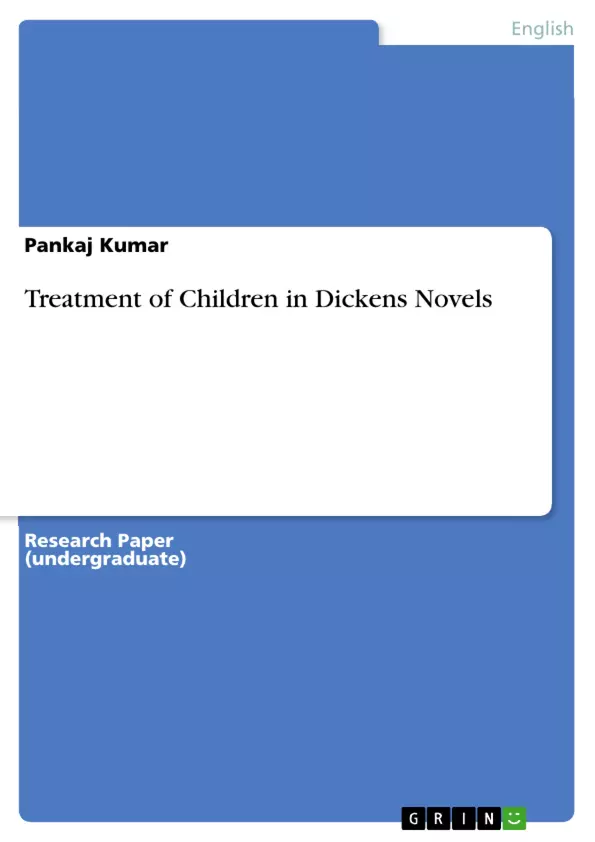This paper will examine the treatment of children in the following novels of Dickens "Oliver Twist" (1839) and "David Copperfield" (1850).
In my analysis of Dickens’ novels, I am going to deal with how poor children became a source of cheap labour and how they were forced to work in hard and tough conditions.
Inhaltsverzeichnis (Table of Contents)
- Treatment of Children in Dickens Novels
- Introduction
- Oliver Twist
- Poor Law and Workhouses
- Child Labour in the Victorian Era
- Chimney Sweeping
- Fagin's Gang
- Oliver's Redemption
- David Copperfield
Zielsetzung und Themenschwerpunkte (Objectives and Key Themes)
This paper examines the treatment of children in two of Charles Dickens' novels, *Oliver Twist* (1839) and *David Copperfield* (1850). It explores how Dickens used these stories to highlight the exploitation and hardship faced by children in Victorian England, particularly through the lens of child labor and the harsh realities of poverty. The paper examines the following themes:- Child Labor in the Industrial Revolution
- Poverty and the Poor Law
- The Role of Workhouses
- The Plight of Orphans
- The Impact of Social Evils on Children's Lives
Zusammenfassung der Kapitel (Chapter Summaries)
The paper begins by introducing the topic of child labor in Victorian England, providing historical context for the widespread exploitation of children in factories, mines, and other industries. The author highlights the economic factors driving child labor, including the financial desperation of working-class families and the perceived cheapness of child labor. The paper then focuses on *Oliver Twist*, examining how Dickens portrayed the realities of workhouses and the exploitation of children within this system. The author explores the role of the Poor Law, which placed many children in workhouses where they were often subject to harsh conditions, inadequate food, and forced labor. Dickens' depiction of chimney sweeping in *Oliver Twist* serves as a prime example of the dangerous and inhumane conditions many children were forced to endure. The author examines the practice of using young children for this work due to their small size and the brutal realities of the job. The paper further examines the role of Fagin's gang in *Oliver Twist*, highlighting how poverty and social neglect could push children towards criminal activities. The author explores the themes of criminal underworlds, the exploitation of children by criminal organizations, and the moral complexities of Oliver's struggle to escape this world. The paper concludes by discussing *David Copperfield* and its autobiographical elements, highlighting how Dickens' own experiences with poverty and child labor influenced his portrayal of David's childhood. The author examines the harsh realities of David's early life, including his experiences with neglect and abusive treatment, reflecting the social and economic pressures faced by many children in Victorian England.Schlüsselwörter (Keywords)
This paper explores the key themes of child labor, poverty, workhouses, orphanhood, criminal gangs, Victorian England, Charles Dickens, *Oliver Twist*, *David Copperfield*, industrial revolution, and social injustice. The analysis focuses on the harsh realities faced by children in Victorian society and the powerful literary techniques used by Charles Dickens to expose these issues.
Excerpt out of 9 pages
- scroll top
- Quote paper
- Pankaj Kumar (Author), 2013, Treatment of Children in Dickens Novels, Munich, GRIN Verlag, https://www.grin.com/document/289223
Look inside the ebook



